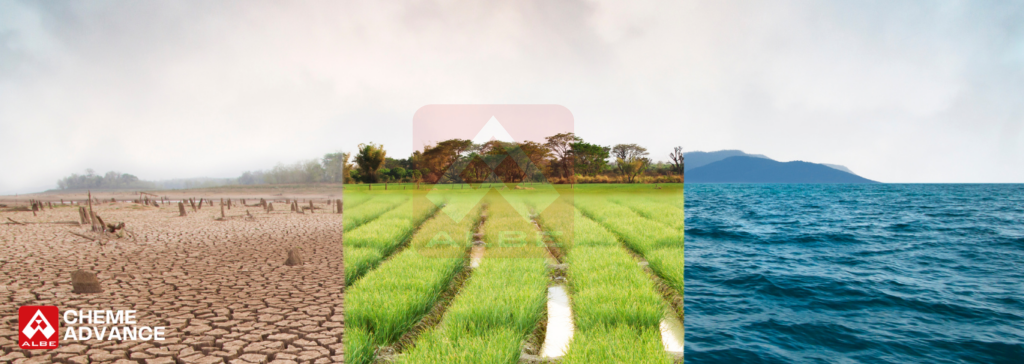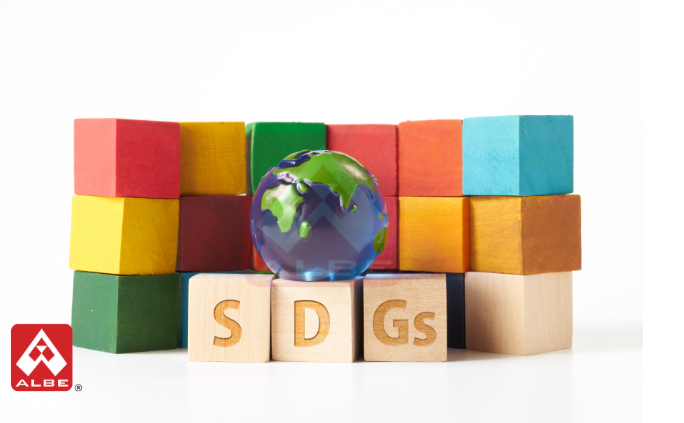
In today’s rapidly developing world, industrial projects must balance economic growth with environmental responsibility. A critical tool for achieving this balance is the Environmental Impact Assessment (EIA), a regulatory process that evaluates the potential environmental consequences of industrial activities before they commence. In Malaysia, EIAs play a vital role in ensuring that new developments, including industrial effluent treatment systems (IETS) that are off-site, adhere to environmental regulations while minimizing harm to ecosystems. Environmental solutions providers and industries must integrate EIAs into project planning to comply with regulatory frameworks and support sustainable development goals. This article explores the importance of EIAs, their process in Malaysia, and emerging trends shaping their future.
Understanding Environmental Impact Assessments (EIA)
An Environmental Impact Assessment (EIA) is a systematic process that identifies, predicts, and evaluates the environmental, social, and economic impacts of a proposed project. The primary goal is to prevent irreversible environmental damage by ensuring that projects incorporate mitigation
measures before they are approved.
Legal Framework for EIAs in Malaysia
The Malaysian government mandates EIAs under Section 34A of the Environmental Quality Act 1974. This regulation requires specific industrial activities, such as off-site industrial effluent treatment systems, to undergo comprehensive environmental evaluations. Failing to comply with these requirements can result in legal action, project delays, and significant financial penalties.
Under the Environmental Quality (Prescribed Activities) (Environmental Impact Assessment) Order 1987, industries must conduct EIAs for activities with potentially high environmental risks, such as:
- Heavy manufacturing plants
- Mining and quarrying projects
- Large-scale agricultural expansion
- Infrastructure megaprojects
- Industrial wastewater treatment facilities
By enforcing these regulations, Malaysia aims to align industrial growth with environmental sustainability.
Why Are EIAs Important ?
As Malaysia undergoes rapid industrial expansion, ensuring environmental sustainability is crucial. EIAs provide multiple benefits:
1. Ensuring Regulatory Compliance
EIAs help industries meet national and international environmental standards, preventing legal complications and ensuring adherence to sustainability commitments (Ahmad & Wood, 2021).

2. Identifying and Mitigating Environmental Risks
EIAs assess potential hazards such as:
- Air and water pollution
- Soil degradation
- Biodiversity loss
- Deforestation and land-use conflicts
Identifying these risks early allows environmental solutions providers to develop strategies that reduce negative impacts (Hassan et al., 2018).
By integrating green technologies and eco-friendly practices, industries contribute to Malaysia’s Sustainable Development Goals (SDGs) and long-term environmental protection.

3. Enhancing Public Trust & Stakeholder Engagement
Public participation ensures transparency and accountability in industrial development. Communities, NGOs, and regulatory bodies can provide feedback that helps refine project planning (Abdullah et al., 2020).
4. Improving Cost Efficiency & Reducing Liabilities
Addressing environmental concerns before project approval prevents expensive remediation costs, legal disputes, and financial losses due to non-compliance.
The EIA Process in Malaysia
The Malaysian EIA process involves several key stages:
1. Screening
In Malaysia, the screening process for EIA is a critical initial step to determine whether a proposed project necessitates a detailed environmental evaluation. This process ensures that only projects with significant potential environmental impacts undergo comprehensive assessments, thereby optimizing resources and regulatory oversight.
Key Components of the Screening Process:
1. Identification of Prescribed Activities:
The Malaysian government has delineated specific activities that are likely to have substantial environmental impacts. These are listed under the Environmental Quality (Prescribed Activities) (Environmental Impact Assessment) Order 1987. Projects falling under these categories are automatically subjected to the EIA process.

2. Preliminary Assessment by the Department of Environment (DOE):
Project proponents are required to submit detailed project descriptions to the DOE. The DOE then evaluates these submissions to ascertain the potential environmental impacts and decides whether a full EIA is warranted.
3. Consultation with Relevant Authorities:
The screening process may involve consultations with other governmental agencies and stakeholders to gather diverse perspectives on the potential environmental implications of the proposed project.

4. Decision on EIA Requirement:
Based on the preliminary information and consultations, the DOE determines whether the project requires:
- No EIA: For projects deemed to have negligible environmental impacts.
- Preliminary EIA: For projects with potential but not significant impacts, necessitating a basic assessment.
- Detailed EIA: For projects likely to have significant environmental impacts, requiring an in-depth evaluation.
2. Scoping Process
Once a project is identified as requiring an EIA, the scoping phase defines the assessment’s scope and
focus. This involves:
- Identifying Key Environmental Issues: Determining the potential environmental impacts that need detailed examination.
- Stakeholder Engagement: Consulting with relevant authorities, experts, and the public to gather insights and concerns.
- Developing Terms of Reference (TOR): Outlining the specific studies, methodologies, and analyses to be conducted during the EIA.
The scoping process ensures that the EIA addresses all pertinent environmental concerns efficiently.
3. Impact Assessment and Mitigation Process
This phase involves a detailed evaluation of the potential environmental impacts and the development of strategies to mitigate adverse effects:
- Baseline Studies: Collecting data on the existing environmental conditions of the project site.
- Impact Prediction: Forecasting the potential environmental changes resulting from the project.
- Significance Evaluation: Assessing the importance of predicted impacts on environmental and social receptors.
- Mitigation Measures: Proposing actions to prevent, reduce,
or offset significant adverse impacts.
This comprehensive approach ensures that potential negative effects are systematically addressed.

4. Reporting
The findings from the impact assessment and proposed mitigation measures are compiled into an EIA report. This document provides a comprehensive analysis of the project’s potential environmental effects and the strategies to manage them.

5. Review and Decision-Making
The EIA report undergoes a review process by the Department of Environment (DOE) and other relevant authorities:
- Public Participation: The public is invited to review and comment on the EIA report, ensuring transparency and inclusivity.
- Technical Evaluation: Experts assess the report’s adequacy, accuracy, and comprehensiveness.
- Decision Issuance: Based on the evaluations, authorities decide to approve, request modifications, or reject the project proposal.
This phase ensures that all relevant factors are considered before project approval.
6. Monitoring and Compliance
Post-approval, monitoring mechanisms are established to ensure compliance with the proposed mitigation measures and environmental standards:
- Environmental Management Plans (EMP): Detailing the actions to be taken to manage and monitor environmental performance.
- Compliance Monitoring: Regular inspections and reporting to verify adherence to environmental commitments.
Adaptive Management: Implementing corrective actions if monitoring indicates non-compliance or unforeseen impacts.
This ongoing oversight helps in promptly identifying and addressing any unforeseen environmental issues
during the project’s implementation.
Challenges in the EIA Process in Malaysia
Despite the structured framework, several challenges hinder the effectiveness of the EIA process in Malaysia:
1. Quality and Consistency of EIA Reports
Variations in the quality of EIA reports can lead to inadequate identification of potential environmental impacts and insufficient mitigation measures.
2. Public Participation
Limited public involvement can result in overlooking local knowledge and concerns, leading to conflicts and reduced project acceptance.
3. Monitoring and Enforcement
Inadequate post-approval monitoring and enforcement can result in non-compliance with approved conditions, leading to unmitigated environmental degradation.
4. Capacity and Resources
Limited technical capacity and resources within regulatory bodies can impede thorough review and monitoring processes, affecting the overall effectiveness of the EIA system.
5. Political and Economic Pressures
Development projects often face political and economic pressures that can influence the impartiality of the EIA process, potentially compromising environmental considerations.
Addressing these challenges is crucial for enhancing the effectiveness of the EIA process in Malaysia.
Future Trends in Environmental Impact Assessment (EIA) in Malaysia
As Malaysia advances its Net Zero 2050 agenda, several emerging trends are shaping the future of EIA processes:
1. Strategic Environmental Assessments (SEA)
Malaysia is incorporating Strategic Environmental Assessments (SEA) to evaluate environmental impacts at a policy and program level, allowing for early intervention in high-risk projects (Abdullah etal., 2020).
2. AI-Powered Environmental Impact Modeling
Advanced AI-based models predict air, water, and soil pollution levels, allowing industries to optimize their environmental strategies in real time (Lee et al., 2022).

3. Sustainable Industrial Infrastructure Development
Industries are increasingly adopting renewable energy, circular economy practices, and green building certifications to comply with global environmental standards (Ministry of Plantation Industries and Commodities Malaysia, 2024).
Conclusion
Environmental Impact Assessments (EIAs) are indispensable in ensuring that Malaysia’s industrial development remains sustainable and compliant with environmental laws. By incorporating advanced technologies, public engagement, and stronger climate resilience measures, EIAs protect natural ecosystems, support industrial sustainability, and enhance environmental governance.
At Cheme Advance, we specialize in helping businesses navigate EIA requirements, ensuring compliance with industrial effluent treatment system regulations while promoting sustainable development.
Discover your environmental solutions today with Cheme Advance!
References
- Abdullah, S. A., Jamaluddin, J., & Omar, R. (2020). Strategic environmental assessment in Malaysia: Challenges and future direction. Planning Malaysia Journal, 18(2), 1-15. https://doi.org/10.12345/pmj.v18i2.2020
- Ahmad, N., & Wood, C. (2021). Enhancing public participation in environmental impact assessment: A Malaysian perspective. Journal of Environmental Policy & Planning, 23(4), 567-582. https://doi.org/10.1080/1523908X.2021.1965432
- Hassan, N., Ismail, W. R., & Tan, K. S. (2018). Climate change adaptation strategies in Malaysia’s EIA process. Science of the Total Environment, 645, 1428-1437. https://doi.org/10.1016/j.scitotenv.2018.07.263
- International Association for Impact Assessment (IAIA). (2019). EIA case studies: Decentralization of environmental governance in Malaysia. https://www.iaia.org/pdf/case-studies/EIAMalaysia.pdf
- Lee, C. H., Ng, M. P., & Rahman, H. (2022). AI and blockchain in sustainable EIA management. Environmental Science & Policy, 134, 302-317. https://doi.org/10.1016/j.envsci.2022.05.024
- Ministry of Plantation Industries and Commodities Malaysia. (2024). Sustainability and compliance with international environmental standards in the Malaysian palm oil industry. https://www.mpoc.gov.my/publications/reports2024
- Tan, Y. L., Lim, S. P., & Wong, C. W. (2023). Regenerative agriculture and sustainable palm oil production in Malaysia. Journal of Sustainable Agriculture, 40(3), 235-251. https://doi.org/10.1080/10440046.2023.1756529

